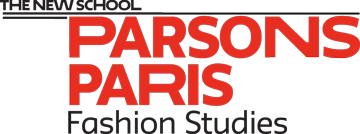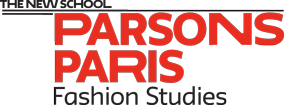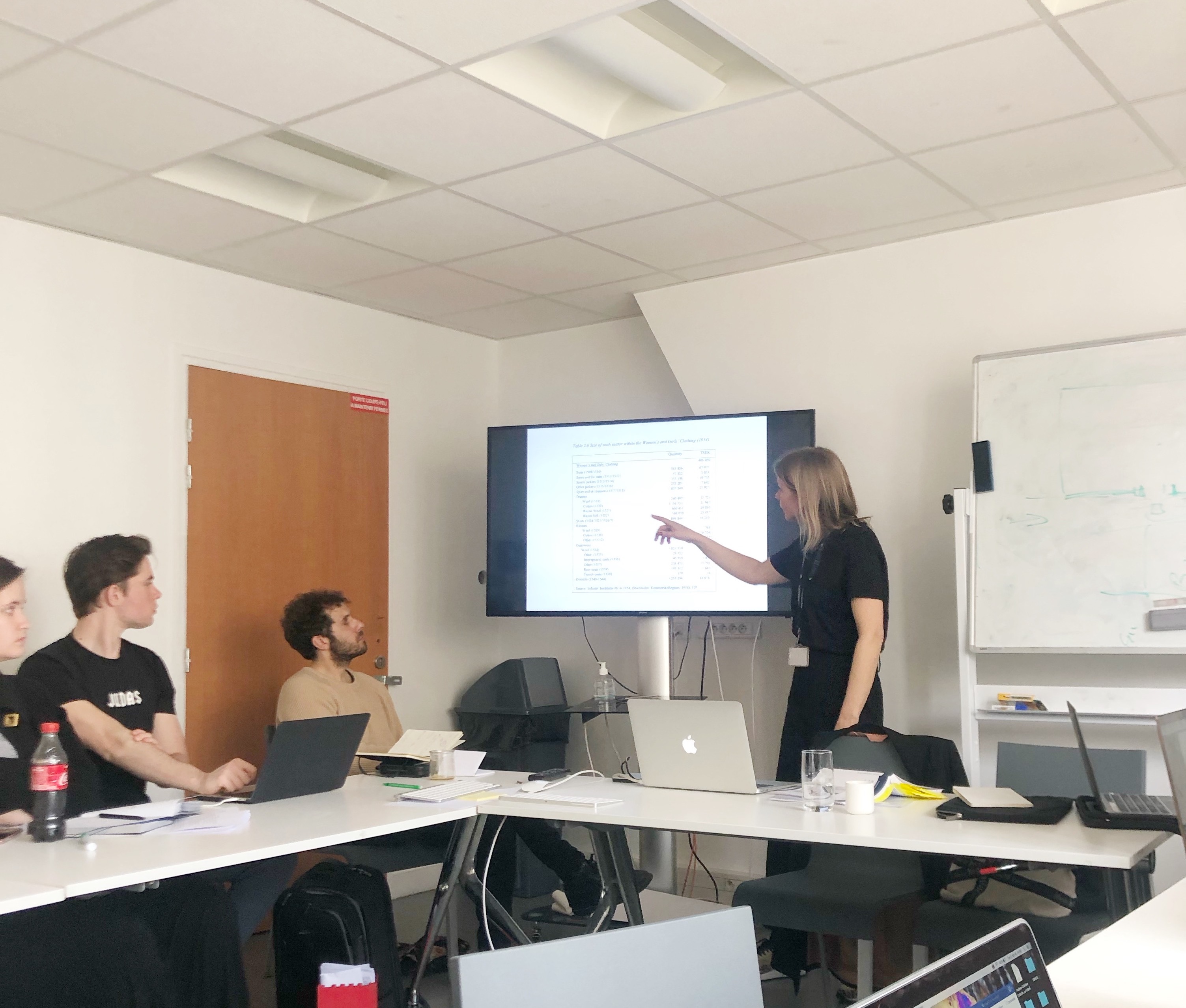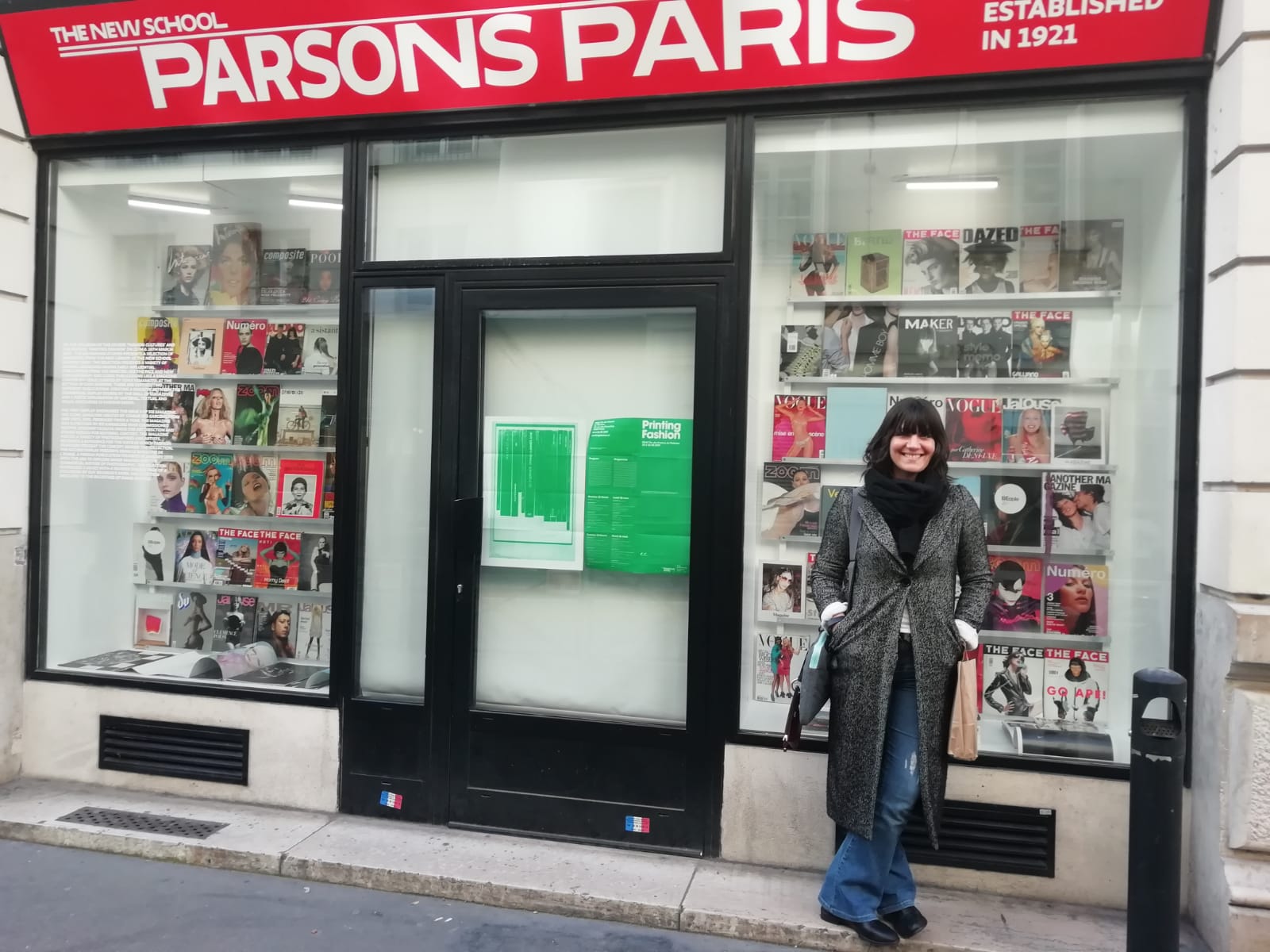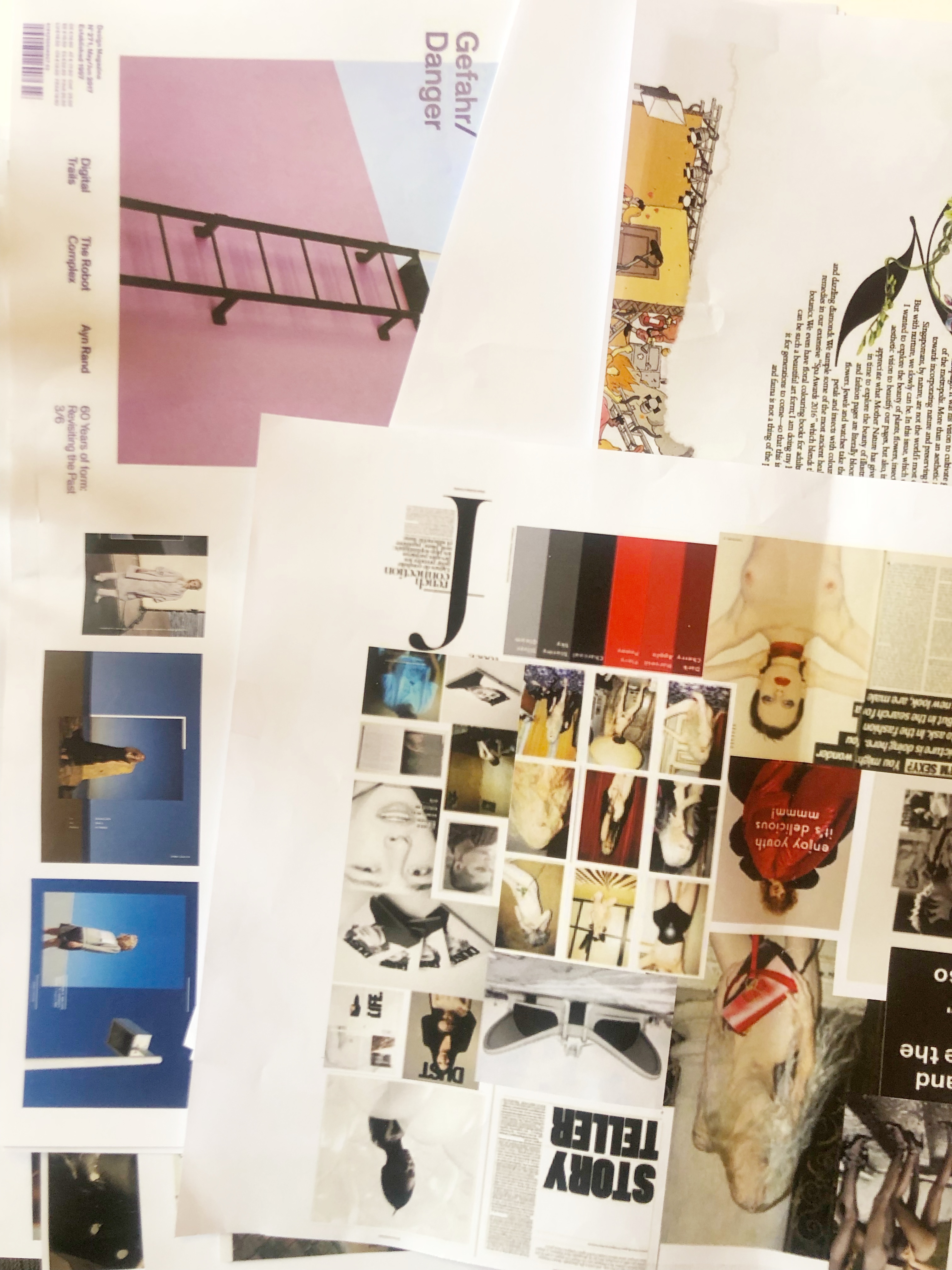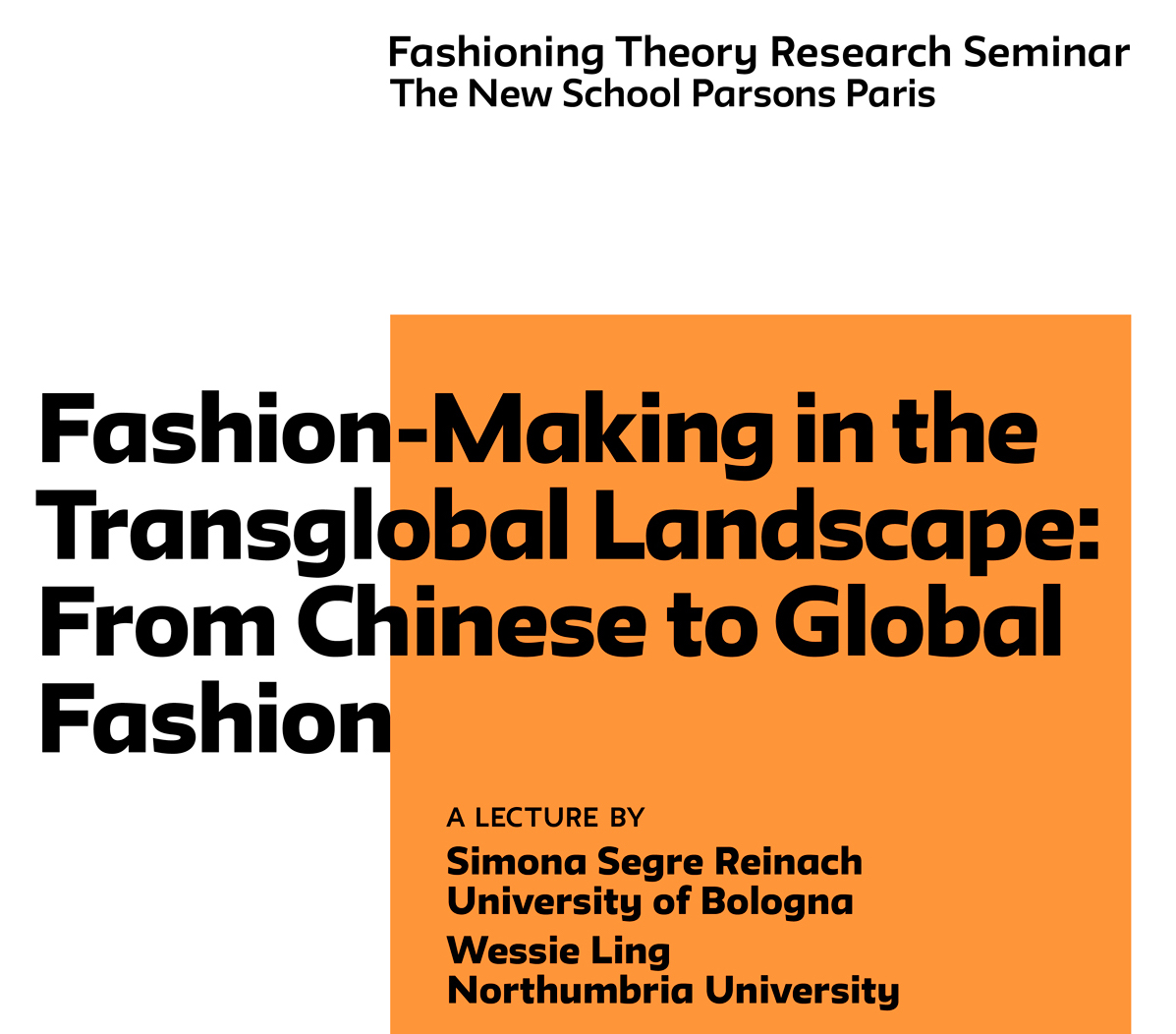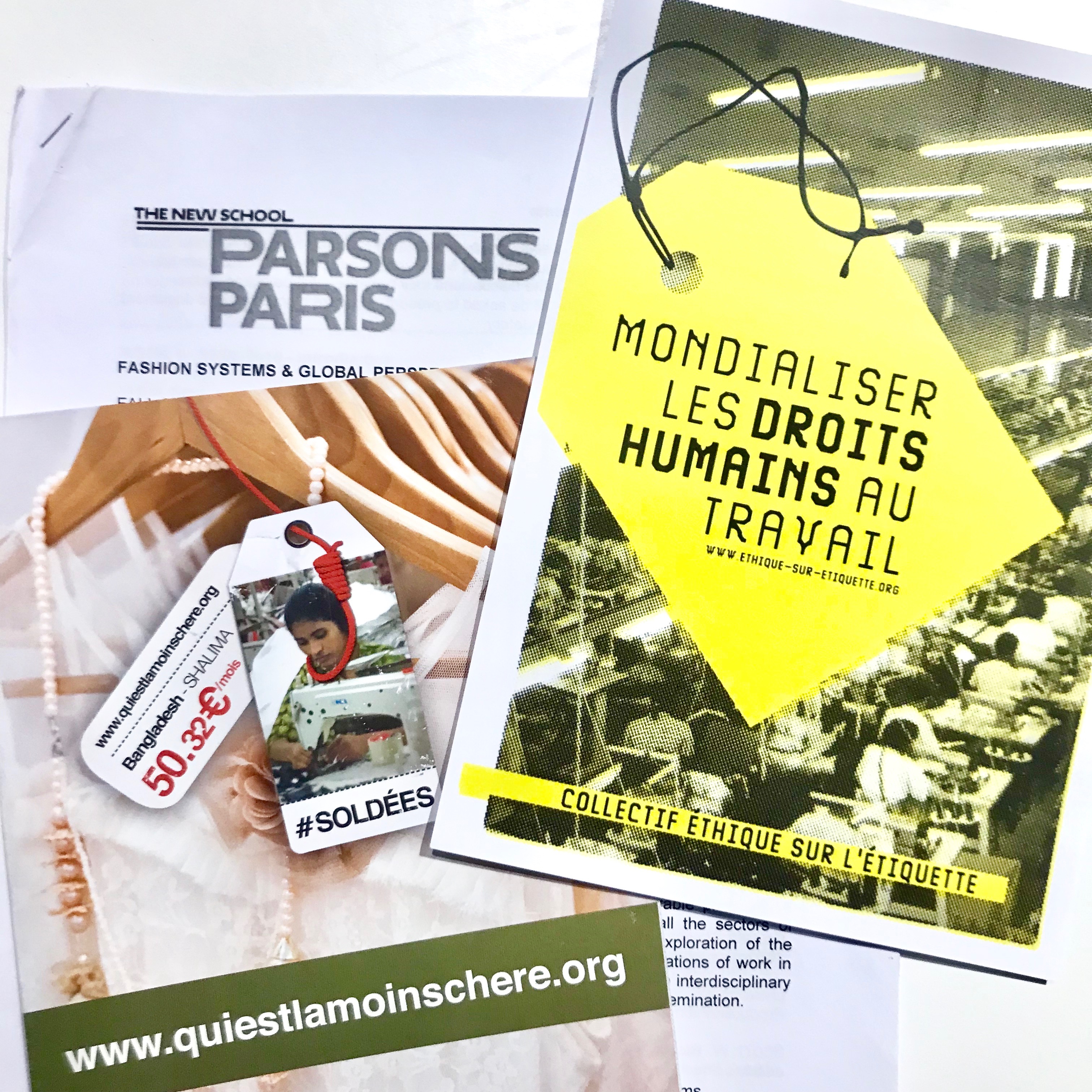On Tuesday April 2nd, 2019, Dr. Ulrika Berglund came to speak to the first year MA Fashion Studies students as part of their class ‘Interpreting Fashion’. Dr. Berglund has a background in business, and an MA and PhD in Fashion Studies from the Centre for Fashion Studies at Stockholm University. The purpose of her lecture was to show students the process behind writing a thesis through the presentation of her own PhD dissertation, Swedish Fashion 1930-1960: Rethinking the Swedish Textile and Clothing Industry.
Dr. Berglund highlighted the importance of focusing on what one likes and identifying the research gap, which is when there is no research done on a particular topic. In her case, and before pursuing an academic pathway, she worked in the Swedish fashion industry for 10 years. During this time, she noticed that most people assumed that Swedish fashion did not exist before the 1960s, a belief that she found problematic. With this in mind, she started her PhD, aiming to find a specific garment that represented Swedish fashion. She decided to focus on the 1930s-1960s because it was the period right before, allegedly, Swedish fashion emerged. Dr. Berglund then explained how to study statistics, and discussed both the pros and limitations of using them. She emphasized that academic work is about findings, and she stressed the importance of choosing the right sources. In her own research, previous studies on Paris fashion played an important role, as this city was crucial in the construction of the Swedish national identity. Moreover, she explained how to adapt certain theories to be able to use them in fashion studies, such as Bourdieu’s notion of the field and Benjamin Anderson’s imagined communities. To finalize, Dr. Berglund added that, as researchers, it is crucial to understand the specificity of the place, city or country that is being analyzed. In her own research, even though the French fashion industry played an important role in it, the Swedish fashion system was different and could not be directly compared to it.
Dr. Berglund’s lecture was invaluable, especially as the students finish their second semester and prepare to write their own theses next academic year.
Written by Sandra Mathey and Amanda Stedman
Photo by Sandra Mathey

